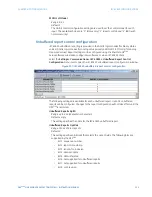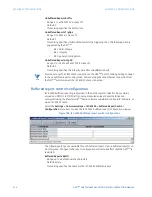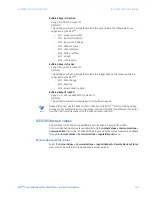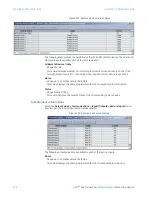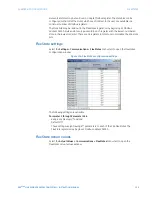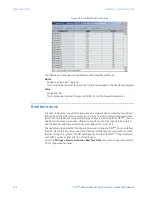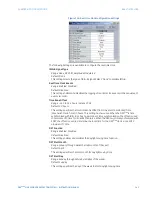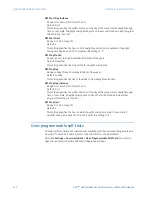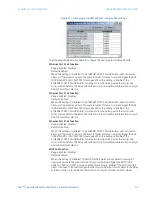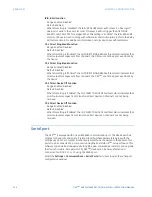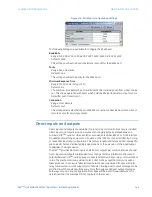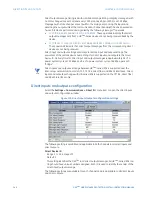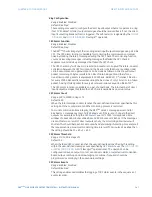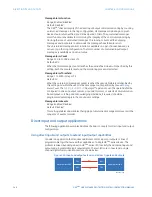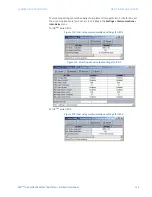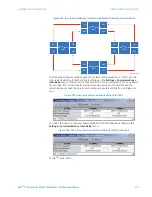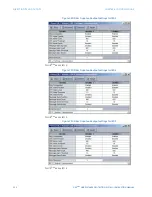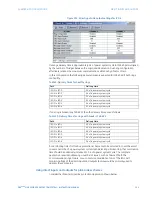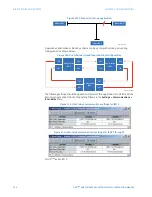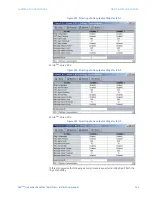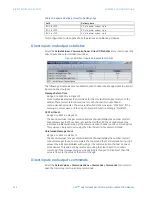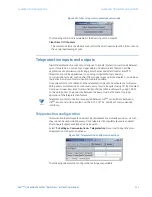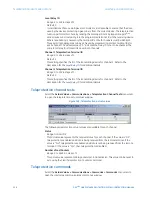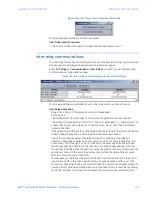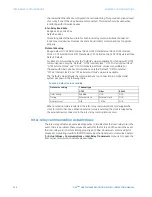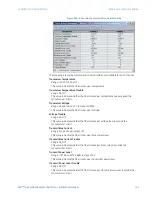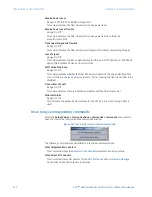
CHAPTER 6: COMMUNICATIONS
DIRECT INPUTS AND OUTPUTS
D90
PLUS
LINE DISTANCE PROTECTION SYSTEM – INSTRUCTION MANUAL
147
Ring Configuration
Range: Enabled, Disabled
Default: Disabled
These settings are used to configure the direct input/output scheme to operate in a ring.
If set to “Enabled”, all direct output messages should be received back. If not, the direct
input/output ring break self-test is triggered. The self-test error is signaled by the
CH1 DIR
IO RING BRK
and
CH2 DIR IO RING BRK
FlexLogic™ operands.
CRC Alarm Function
Range: Enabled, Disabled
Default: Disabled
The D90
Plus
checks integrity of the incoming direct input/output messages using a 32-bit
CRC. The CRC alarm function is available for monitoring the communication medium
noise by tracking the rate of messages failing the CRC check. The monitoring function
counts all incoming messages, including messages that failed the CRC check. A
separate counter adds up messages that failed the CRC check.
The CRC check may fail if one or more bits in a packet are corrupted. Therefore, an exact
correlation between the CRC fail rate and the bit error rate (BER) is not possible. Under
certain assumptions an approximation can be made as follows. A direct input/output
packet containing 20 bytes results in 160 bits of data being sent and therefore, a
transmission of 63 packets is equivalent to 10000 bits. A BER of 10
–4
implies 1 bit error
for every 10000 bits sent/received. Assuming the best case of only 1 bit error in a failed
packet, having 1 failed packet for every 63 received is about equal to a BER of 10
–4
.
The CRC alarm function is available on a per-channel basis. The total number of direct
input/output messages that failed the CRC check is available as an actual value.
CRC Alarm Count
Range: 100 to 10000 in steps of 1
Default: 600
When the total message counter reaches the user-defined maximum specified by this
setting, both the counters reset and the monitoring process is restarted.
To monitor communications integrity, the D90
Plus
sends 1 message per second (at
64 kbps) or 2 messages per second (128 kbps) even if there is no change in the direct
outputs. For example, setting the
CRC Alarm Count
to “10000” corresponds a time
window of about 160 minutes at 64 kbps and 80 minutes at 128 kbps. If the messages
are sent faster as a result of direct outputs activity, the monitoring time interval will
shorten. This should be taken into account when determining this setting. For example, if
the requirement is a maximum monitoring time interval of 10 minutes at 64 kbps, then
the setting should be 10 × 60 × 1 = 600.
CRC Alarm Threshold
Range: 1 to 1000 in steps of 1
Default: 10
When the failed CRC counter reaches the user-defined level specified by this setting
within the user-defined message count specified by
CRC Alarm Count
, the
DIR IO CH1 CRC
ALARM
or
DIR IO CH2 CRC ALARM
FlexLogic™ operand is set. The operand can be
configured to drive an output contact, annunciator alarm, or selected communication-
based output. Latching and acknowledging conditions, if required, should be
programmed accordingly in the annunciator settings.
CRC Alarm Events
Range: Enabled, Disabled
Default: Disabled
This setting enables and disables the logging of CRC alarm events in the sequence of
events recorder.

